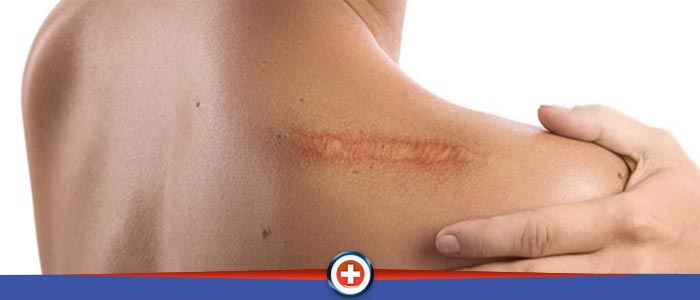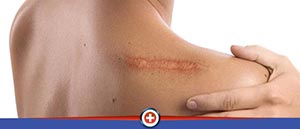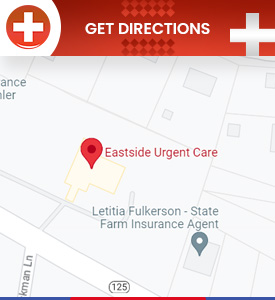Stitches and Lacerations: What You Need to Know
When the skin is cut or torn, stitches may be necessary to promote healing and prevent infection. Lacerations are more than a quarter-inch deep or half-inch long cut that needs stitches. For more information, contact us or book a same-day priority appointment. We are conveniently located at 872 Ohio Pike Cincinnati, OH 45245.




Table of Contents:
What helps stitches heal faster?
How long does a stitch take to heal?
What is the best treatment for stitches?
How long should you keep stitches covered?
After suffering from a large scratch, cut, or laceration, stitches are the most likely treatment that you will receive to ensure that the wound heals properly. There are multiple types of stitches that may be used depending on the severity and placement of the injury, including absorbable or dissolvable stitches, as well as stitches that will need to be removed several days later by a healthcare provider from the clinic. Stitches are fairly simple to take care of; it is just important that you follow all directives provided by the healthcare professional that administers the stitches to prevent infections or scarring.
The best way to allow your stitches to heal as fast as possible is to support the natural healing process by keeping the wound clean and moisturized. It is recommended that for the first 24 hours after you get the stitches that you keep the area dry so only start cleaning it after the first 24 hours have passed. At the 24 to 48-hour mark, you can start cleaning the area with clean water quickly and then pat dry with a clean cloth a couple of times per day. As well, applying petroleum jelly in a thin layer after cleaning the area and then placing a bandage or gauze over will help to prevent the wound from developing a scab as scabbing will make the stitches take a bit longer to heal and can make scarring noticeable.
The timeline for which your stitches may take to be fully healed will depend on how big the wound was, where on the body the stitches were done, and what type of stitches were used. Stitches done on areas of your body where there is quite a bit of movement will likely take a little bit longer to heal, such as on joints. The majority of stitches will be completely healed within 4 to 6 weeks at which point the tissue of the skin and wound are able to achieve full mobility without worry of pulling on the stitches at all. Dissolvable or absorbable stitches will likely either fall out or dissolve without the first two weeks, but may take a few weeks to disappear entirely. Some stitches may need to be removed a few days after they were placed but the wound likely won’t be entirely healed just yet so it is important that even with stitches removed, all instructions given by a healthcare provider are closely followed.
The best treatment for stitches is to keep the area dry and clean. Often people will think to use substances such as hydrogen peroxide or rubbing alcohol to keep the area clean, but those types of products can actually make the wound take longer to heal. The best way to keep the stitches clean as they heal is to just rinse the area with clean water, especially if any particles or dirt get into the wound, and apply petroleum jelly onto the stitches and cover them with a loose bandage. Depending on what type of stitches you get, your physician will provide more in-depth instructions or tips on how to best take care of your stitches to ensure that the risk of infection and scarring is as low as possible.
If your stitches were covered by a health care professional before you left the clinic, they will likely tell you to keep the wound covered for 2 to 3 more days and to try your best to avoid getting the dressing wet at all to ensure that the wound doesn’t dry out and is not exposed to dirt. If the dressing gets wet at all, or the wound is oozing or bleeding, the dressings will need to be changed. The longer you are able to keep the wound covered, meaning after you take off the initial dressing you reapply a new clean dressing after applying petroleum jelly, the better your stitches will heal.
The healthcare provider that performs the stitches will ensure that you have all the necessary information regarding keeping stitches covered and how to redress the wound before you leave the clinic. For more information, contact us or book a same-day priority appointment. We are conveniently located at 872 Ohio Pike Cincinnati, OH 45245. We serve patients from Cincinnati OH, Covedale OH, Delhi OH, St Bernard OH, Wilders KY, and Elmwood Place OH.

Additional Services You May Need
▸ Asthma
▸ Bronchitis
▸ DOT Physical
▸ Employment Drug Screen
▸ Illness
▸ Injury
▸ Insect and Animal Bites
▸ Occupational Medicine
▸ Pediatric Visit
▸ Pre-OP Physical
▸ School & Sports Physicals
▸ STD And Treatment
▸ Rash/Allergic Reaction
▸ Stomach Flu Treatment

Additional Services You May Need
▸ Asthma
▸ Bronchitis
▸ DOT Physical
▸ Employment Drug Screen
▸ Illness
▸ Injury
▸ Insect and Animal Bites
▸ Occupational Medicine
▸ Pediatric Visit
▸ Pre-OP Physical
▸ School & Sports Physicals
▸ STD And Treatment
▸ Rash/Allergic Reaction
▸ Stomach Flu Treatment



